Estimated reading time: 19 minutes
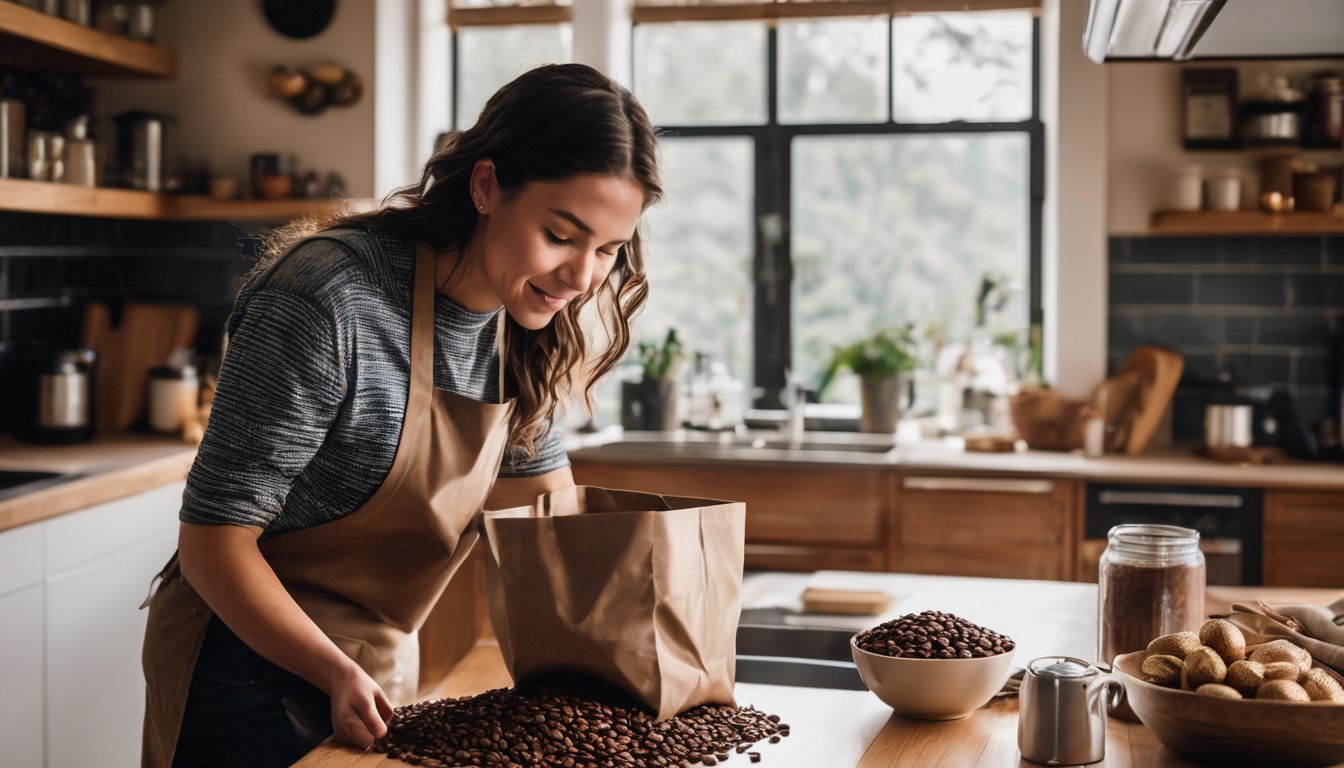
Introduction
Ahoy, coffee creators and bean architects! Welcome to my DIY Coffee Blends: Creating Your Signature Roast At Home shindig. Have you ever taken a sip of your coffee and thought, “This is nice, but what if it could moonwalk on my taste buds or do a triple backflip of flavor excitement?” Well, my java-loving pals, you’re not alone. The coffee world can sometimes feel like a repetitive sitcom, and you’re ready for the plot twist that involves you as the star barista.
If you’re yearning for the power to sculpt your coffee into a masterpiece, then crafting your own blend might be the breath of fresh air your morning routine is desperately seeking. Trust me; I get it. Standing in the coffee aisle, surrounded by more beans than a beanstalk, and realizing none of them quite hit the spot – it’s a struggle that rivals a dramatic scene from a Shakespearean play.
But fear not! In my quest for the ultimate cup of joe, I stumbled upon the mystical art of DIY coffee blending. Picture this: creating your concoction of caffeinated bliss right in the comfort of your kitchen, and the best part? It outshines even the fanciest store-bought brews. It’s like being the coffee wizard of your domain, waving a magic wand made of coffee stirrers and sprinkling beans instead of fairy dust.
So, my fellow flavor pioneers, let’s roll up our sleeves, put on our imaginary coffee lab coats, and dive into the alchemy of coffee blending. Are you ready for a brew-tiful adventure? Let’s make some coffee magic happen!
Key Takeaways
- Mix different types of coffee beans to create your own unique blend at home.
- Experiment with bean origins, roast levels, and flavors to find the perfect taste for you.
- Use a 60/40 ratio as a starting point when blending different coffees.
- Try both pre-blending and post-blending methods to see which produces the flavor you prefer.
- Keep experimenting with blends by adjusting ratios and trying new beans.
DIY Coffee Blends: Creating Your Signature Roast At Home

Understanding DIY Coffee Blends
Diving into the world of coffee blends is like becoming a flavor alchemist; you get to mix and match beans to create something truly unique. It’s not just about tossing random coffees together—it’s an art form that balances taste, aroma, and body to craft the perfect cup.
What is a DIY coffee blend?
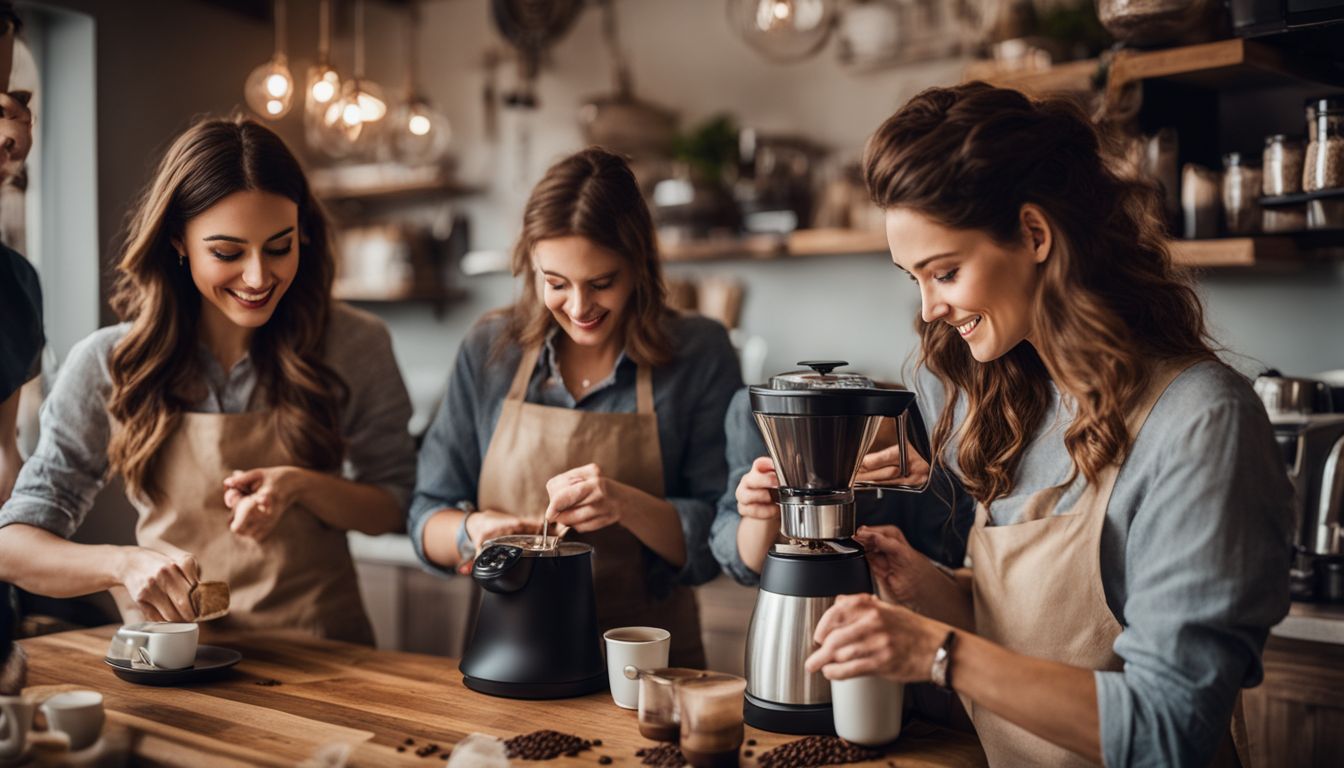
A DIY coffee blend is like a melody, combining notes from different single-origin beans into one harmonious cup. It’s where I can take two or more types of coffee beans from various parts of the world and mix them to create a unique taste.
This isn’t just tossing random beans together; it’s an art form that balances flavors for something special.
Let’s say you love the floral hints of Ethiopian coffee but crave the boldness Indonesian beans bring. Blending lets you merge these worlds! You start by picking a base flavor, then layer in high notes and low ones until each sip sings with complexity.
With blending, there’s room to play around—the goal is crafting a custom profile that wows your palate and brings out the best in every bean.
Differences from single origin coffee

Now that we know what a coffee blend is, let’s talk about how it stands out from single-origin coffee. Single-origin coffees come from one place and capture the distinct tastes of that region.
They are like solo artists, each with unique notes and personalities. Blends, on the other hand, are like a band made up of different musicians—beans from various places working together.
Creating a blend lets me mix flavors to get something new and exciting. I can take beans with chocolatey notes and combine them with others that have fruity undertones. This gives me control over taste and quality.
Plus, if I make a small mistake while roasting, it’s not the end of the world! DIY coffee blends hide those little errors better than single-origin beans.
My favorite part is experimenting with combinations to craft my signature cup of coffee—something you just can’t do with single-origin varieties alone. It’s thrilling to try new mixes and find what works best for my morning brew or an espresso shot that really wows friends.
Each blend I put together tells its own story through flavor harmony—a dance between sweet, sour, salty, bitter.. even umami tones!
Benefits of DIY coffee blending
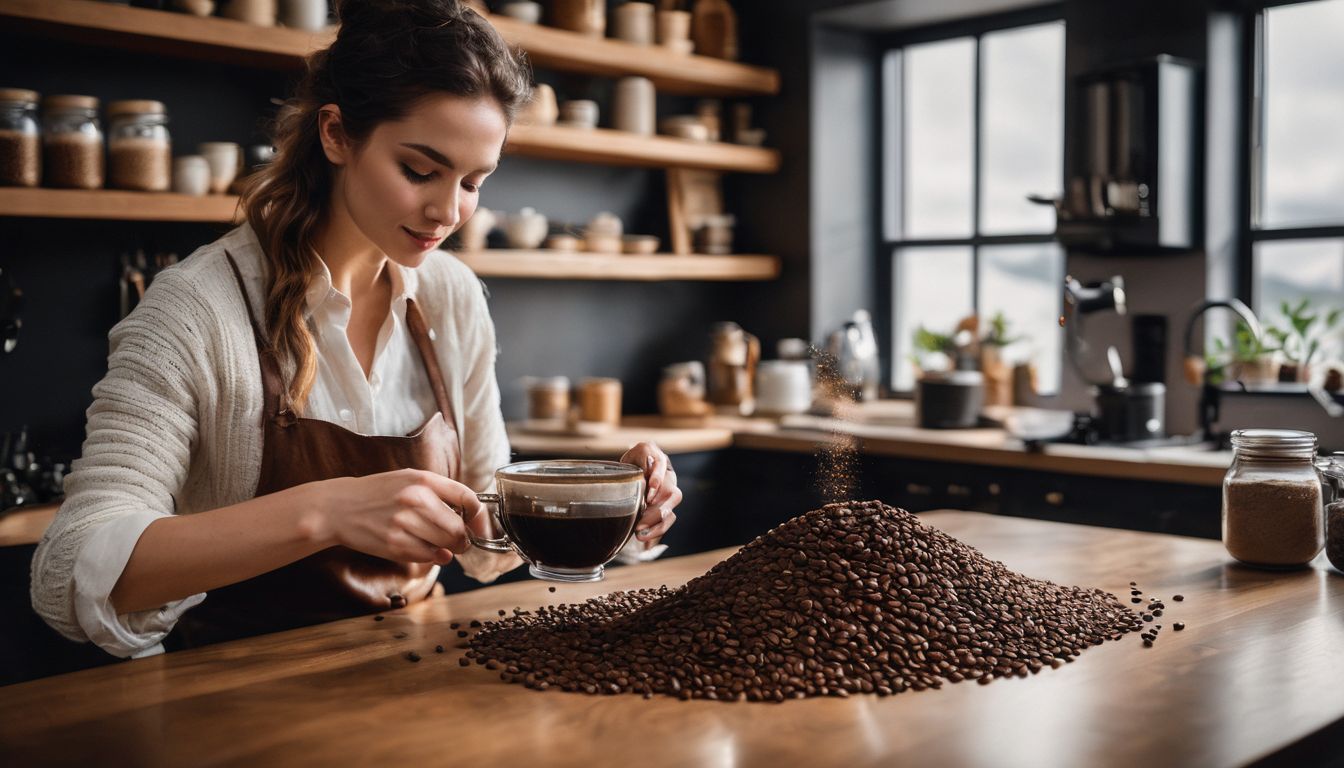
Blending coffee is like painting with flavors – I get to mix different beans to create a unique masterpiece. It’s about crafting that perfect balance where no single taste overshadows another.
With blends, if I slip up a bit on the roasting time, it’s not the end of the world; they’re more forgiving than single-origin coffees which can demand precision.
I love experimenting in my home kitchen, mixing Indonesian robustas for their strength with sweet Arabicas for smoothness. Each cup brewed from these DIY blends has its own story – rich aromas, subtle hints of chocolate or fruity undertones, and a beautiful crema atop every espresso shot.
The result is always rewarding: a personalized coffee experience crafted by my own hands.
Choosing the Right Coffee Beans

When I’m crafting my signature roast, picking out the right coffee beans becomes my canvas for flavor—it’s where magic begins to brew. It’s not just about grabbing any old bean; it’s a deliberate choice, one that hinges on understanding nuances like acidity levels, body, and which taste notes will harmonize in your cup.
Factors to consider

Picking the right coffee beans is key for a perfect blend. Each choice shapes the flavor and quality of your DIY coffee blends. Here’s what to consider:
- Origin of the Beans: Single origin beans come from one place, and blended beans mix origins. Think about whether you want a pure taste or a combination of flavors.
- Roast Level: Light, medium, or dark? Each level changes the taste. Dark roasts are bold and bitter, while light roasts are more acidic and complex.
- Bean Type: Arabica beans tend to be sweeter and softer. Robusta beans offer a stronger, more pungent kick.
- Flavor Profile: Decide on the taste you’re aiming for. Do you prefer fruity notes or a chocolatey richness?
- Acidity: Some like their coffee with high acidity, which gives a tangy touch. Others enjoy low acidity for smoother sips.
- Body: This is about how the coffee feels in your mouth. Do you enjoy a full-bodied, creamy texture or something lighter?
- Aroma: The smell is huge! It can make your blend feel fresh or warm – choose based on what olfactory experience you love.
Single origin vs. blended beans

Exploring the world of coffee, I’ve often marveled at the diversity between single origin and blended beans. It’s like a dance of flavors and aromas, each with their own unique steps. Let me break it down for you.
| Single Origin Beans | Blended Beans |
|---|---|
| Hail from a single geographical region or farm | Combine varieties from different origins |
| Offer a distinct taste reflective of their growing conditions | Create a balanced and well-rounded flavor profile |
| Can exhibit a wide range of flavors based on soil, altitude, and climate | Aim to highlight the best qualities of each bean |
| Seasonal variations can affect flavor and availability | Maintain consistency in flavor throughout the year |
| Ideal for those looking to experience the essence of a specific region | Cater to those wanting a consistent taste with every cup |
| Generally preferred by coffee purists and enthusiasts | Favored by cafes and roasters for signature house blends |
Diving into the distinctiveness of single origin beans offers a taste adventure, highlighting the natural characteristics of their birthplace. On the other side, blending is an art form, seeking harmony and balance, and often revealing a complexity that a single origin might not express alone. These choices—both single origin and blended—reflect a personal journey through taste and preference. Whether I’m craving the bright acidity of a Kenyan coffee or the rich, harmonious notes of an espresso blend, the options are delightfully limitless.
Flavor profiles to aim for

Creating your perfect DIY coffee blend starts with knowing the flavors you love. Maybe you’re drawn to a rich, chocolatey taste or crave that bright, fruity kick in the morning. You’ll find that different beans can add notes like nutty, spicy, or even savory to your cup.
Aim for a profile that excites your taste buds and suits your mood.
Let’s talk about those flavor profiles! Light roasts shine with their acidity and often bring out floral or citrus hints. Darker roasts tend to feel bolder and deliver smoky vibes.
The trick is in mixing beans to highlight best bits of each. Whether it’s a smooth bourbona hint or an energetic splash of cacao—you get to decide what goes into that personalized roast bubbling away in your kitchen!
Ratios and Equipment for Blending

Discovering the perfect balance in your DIY coffee blend is like playing chemist with beans, and you’ll definitely want to know what equipment will make your concoction stand out—let’s dive into the nitty-gritty of ratios and gear so you can craft a cup that’s uniquely yours.
Ready to find out more? Keep reading!
How much coffee to blend
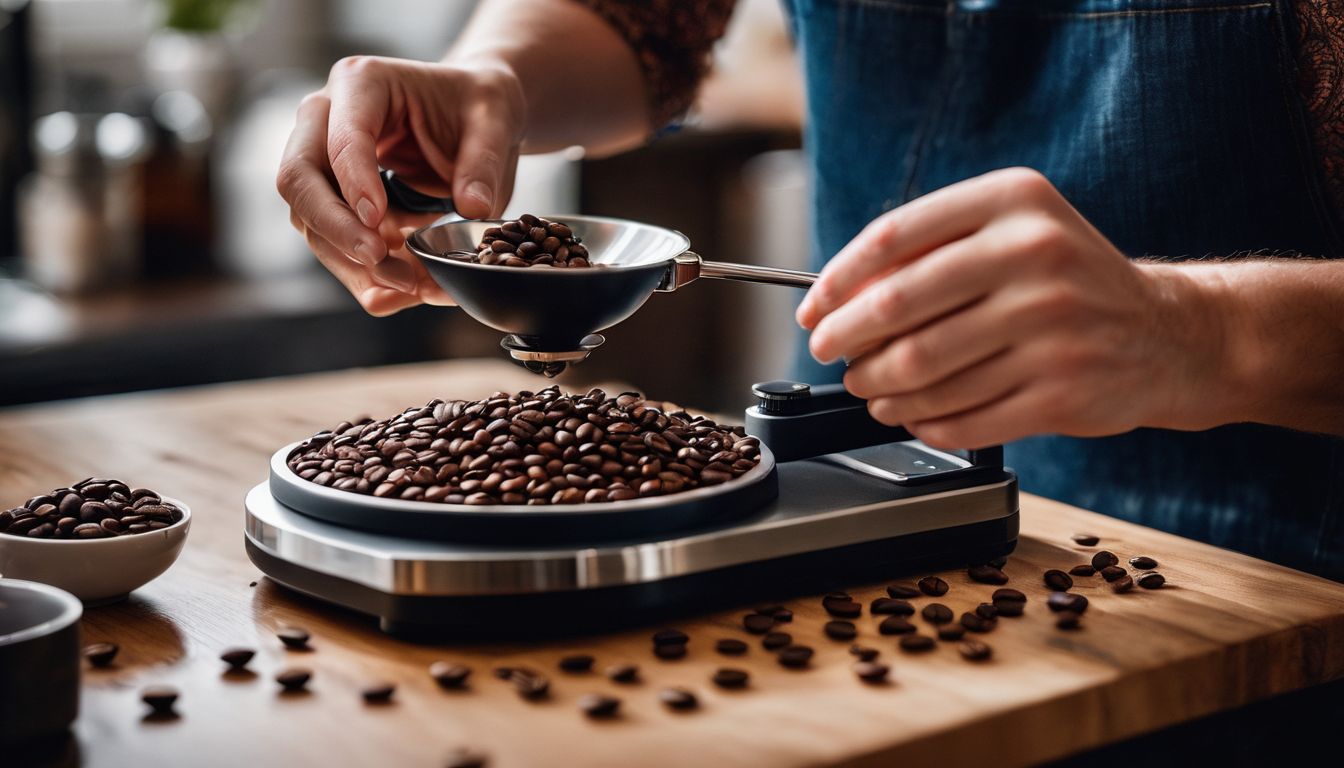
I love experimenting with coffee blends at home. It’s like being a chef, but for coffee! To start creating your signature roast, it helps to know how much of each type of bean to use.
A good rule is the 60/40 ratio. This means you use 60% of one kind and 40% of another. For example, if you want a strong base flavor, use 60% Indonesian coffee for its earthy tones and add 40% Arabica for sweetness.
You don’t need a lot to begin with. Try blending small amounts first—just enough for a few cups. This way, you can taste test without wasting beans if it’s not perfect yet. And believe me, getting it just right might take a few tries! Use your kitchen scale to weigh out the beans accurately; precision counts here.
Once you’ve got those ratios figured out, grab your necessary equipment and get ready for the next step: actually mixing them together! Keep in mind that whether you choose pre-blending or post-blending will affect the final taste—so let’s dive into that process next..
Necessary equipment
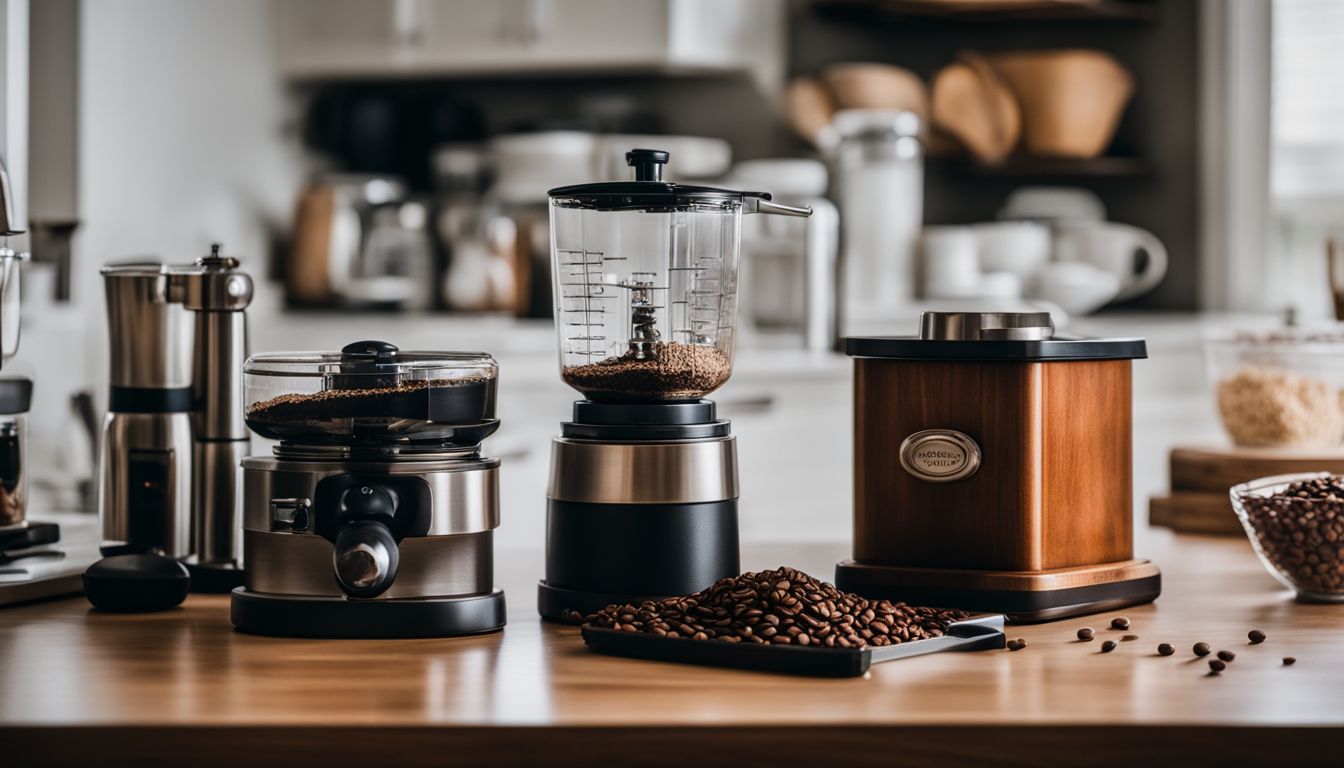
Now that we’ve discussed how much coffee to blend, let’s talk about the tools you’ll need. Getting the right equipment is key to making great blends at home. Here’s what you should have on hand:
- A reliable coffee grinder: You’ll want a grinder that can handle different coarseness levels. This way, you get the perfect grind for espresso or filter-drip methods.
- Measuring tools: Accurate scoops and scales help measure your beans before blending. This ensures consistency in your coffee batches.
- A mixing container: After grinding, you’ll need a large enough bowl or container to mix your beans thoroughly.
- A storage container: Once blended, keep your coffee fresh in an airtight container away from light and moisture.
The DIY Coffee Blending Process

Diving into the blending process is where your inner coffee alchemist comes to life—think of it as a playground for taste, where you get to experiment and refine until that perfect harmony of flavors sings in your cup; curiosity piqued? Keep reading, and let’s unlock the secrets together.
Pre-blending vs. post-blending
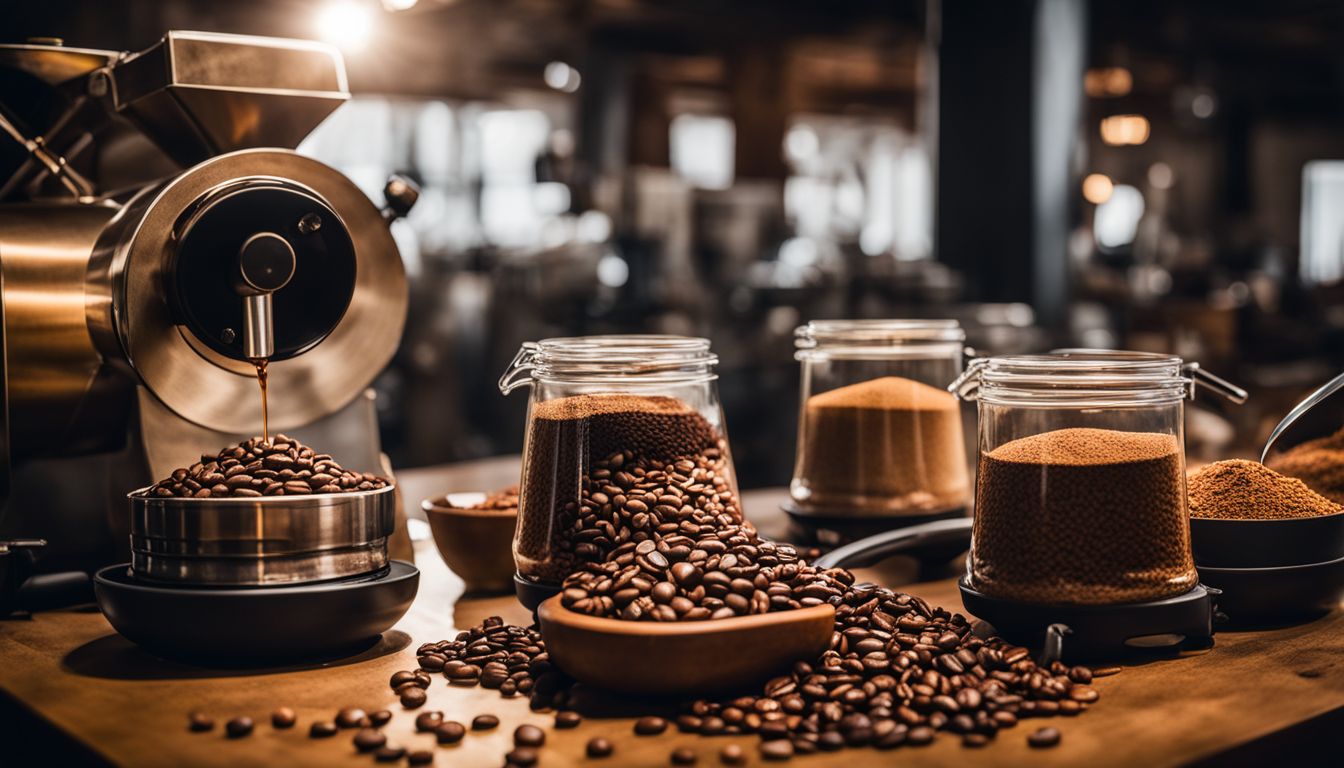
Pre-blending mixes all your green coffee beans together before roasting. This method is great if you want consistent batch sizes. You’ll get a uniform roast, but there’s a catch. Sometimes the bean size varies or they have different moisture levels.
These differences can change how your coffee tastes in the end.
With post-blending, you roast each type of bean on its own and mix them afterward. I love this way because it lets me control how each bean turns out. Perfect for when you’re aiming for that special flavor profile! But be warned, it takes more work to keep your batch sizes even, and mixing different sized batches can be tricky.
Remember these points as you start creating blends that could become beloved staples in homes everywhere—or maybe just in yours!
Tips for creating your own blends

Crafting my own coffee blend is fun and rewarding. It lets me play with flavors to make a unique cup that’s all mine. Here are some tips for making great coffee blends at home:
- Start by selecting high – quality, fresh beans. Use beans that have been recently roasted for the best flavor and aroma.
- Choose a base coffee as your main ingredient. Typically, a smooth and mild bean works well to build upon.
- Experiment with different origins. Mix beans from various countries to explore new taste combinations.
- Pay attention to roast levels. Combine lighter roasts for fruity notes or darker roasts for a smokier taste in your blend.
- Keep the batch small. Use no more than five types of beans in your blend, each making up at least 8% to maintain balance.
- Think about the aftertaste you enjoy. Do you like lingering sweetness or perhaps a hint of bitter? Add beans accordingly.
- Consider the brew method you’ll use most. Espresso-based drinks might need a different blend than filter-drip brewing.
Popular Coffee Blend Recipes

Espresso blends
I love exploring the world of espresso blends. Mixing different single-origin coffee beans helps me create a beverage that’s both unique and delightful.
- Starting with quality beans is essential. I look for fresh, high – grade Arabica coffee as my base.
- Deciding on my desired flavor profile guides my selection. I usually aim for a mix of nutty and chocolatey notes.
- Balancing the beans is key. Espresso blends often combine two different types to achieve complexity.
- Roasting levels matter. A blend might include both light – roasted Ethiopian Sidamo, for its bright acidity, and darker roasted beans for richness.
- I pay attention to the roast date. Freshly roasted coffee ensures the best flavor when blended.
- After choosing my beans, I figure out the right ratios. A starting point might be 50/50, but adjustments are part of the fun.
- Grind consistency is crucial for espresso. I make sure my grinder is set to produce a fine, even texture.
- Tamping the grounds properly affects extraction. Too loose or tight can make or break an espresso shot’s quality.
- The taste test comes next. After pulling a shot, I’ll sip it to see if it hits all the basic tastes just right.
Filter-drip blends (Melange and Mokha-Java)
I’ve been experimenting with filter-drip blends recently, and I’m excited to share what I’ve discovered. Melange and Mokha-Java are two unique blends that offer a whole new world of flavors.
- Melange is a mix of different roast levels. This creates a complex flavor profile.
- Mokha – Java, on the other hand, combines Arabian Mocha with Indonesian Java. It’s one of the oldest known coffee blends in the world.
- These blends stand out because they balance two distinct single – origin beans. You taste each origin’s best qualities.
- They’re ideal for folks who want more than a single note in their cup. Blends like these cater to a wider range of palates.
- When you blend after roasting, known as post – blending, you preserve each bean’s unique characteristics.
- Pre – blending means mixing beans before roasting. This can create a unique harmony between the beans as they roast together.
- Aim for sweet and chocolaty notes from your Arabian Mocha when brewing Mokha – Java.
- Search for earthy and spicy elements from your Indonesian Java to complement it.
- Don’t worry too much about making mistakes with these blends. They are forgiving and great for home experiments.
- Start with an even 50/50 split between the two coffees and adjust based on what tastes good to you.
Challenges and Considerations
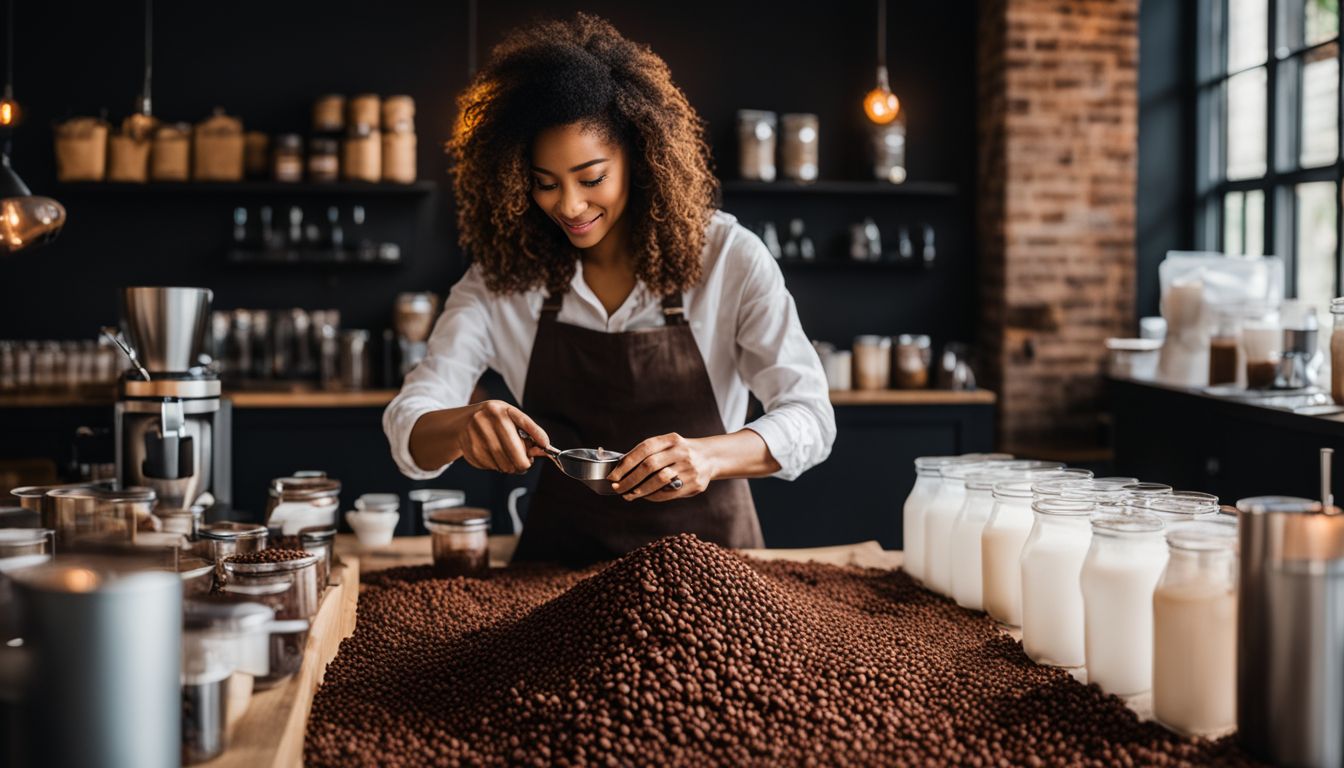
Navigating the world of DIY coffee blending at home isn’t without its hurdles—you’ve got to grasp the subtleties of base coffees and roast profiles while embracing a cycle of trial and error, all to craft that perfect cup; it’s an adventure in flavors that awaits your personal touch.
Want to dive in? Keep reading and let’s get those beans talking.
Importance of base coffee
Base coffee is like the foundation of a house. It sets the stage for your unique blend. Just as you’d pick sturdy materials to build a home, I choose strong base notes from different beans for my DIY coffee blends.
These can be earthy or bold flavors that stand up well when mixed with others. Think about it: without a solid base, everything else might just topple over.
I pay close attention to choosing my base because it carries the weight of other flavors. This means picking beans that provide a consistent taste which can anchor the high notes and acidity we often love in our cup of joe.
In my kitchen, good base coffee isn’t just an option; it’s a must if I want to create something great.
Getting this right paves the way for experimenting with more nuanced flavors and roast profiles. Next up is understanding those roast profiles – another key step in crafting your signature coffee roast at home.
Understanding the roast profiles
Just like finding the perfect base coffee is key, getting to grips with roast profiles is essential. Roast levels bring out different characteristics in your coffee beans. Light roasts have higher acidity and maintain most of their original flavor, making them bright and vibrant.
They’re often preferred for more complex blends where you want those unique notes to shine.
Moving on to medium roasts—they’re like the all-rounders of the coffee world. These bring a balance between acidity and body, giving you rich flavors without losing the bean’s distinct taste.
Dark roasts go even further; they have a bold, robust quality with less acidity. You’ll taste more of that toasty flavor from the roasting process itself. So while blending your DIY coffee at home, think about what roast profile matches your vibe best—light and lively or dark and daring? It’s all about experimenting until you find that sweet spot that speaks directly to your palate!
Experimentation and refinement
Understanding roast profiles is just the beginning. Let’s dive into the heart of crafting a unique coffee blend: experimentation and refinement. To nail down your signature roast, you have to play with different beans and ratios.
Try mixing robusta for strength with arabica beans for their smooth flavor. See what happens when you combine dry-processed coffees with those that are wet-processed.
You’ll also decide whether to mix your beans before or after roasting each type separately. Pre-blending gives a uniform taste, while post-blending can highlight individual bean flavors.
Keep adjusting until you find that perfect balance – where every sip feels like it was made just for you! Remember, creating blends is an art as much as it is science; trust your taste buds and have fun with it!
Conclusion
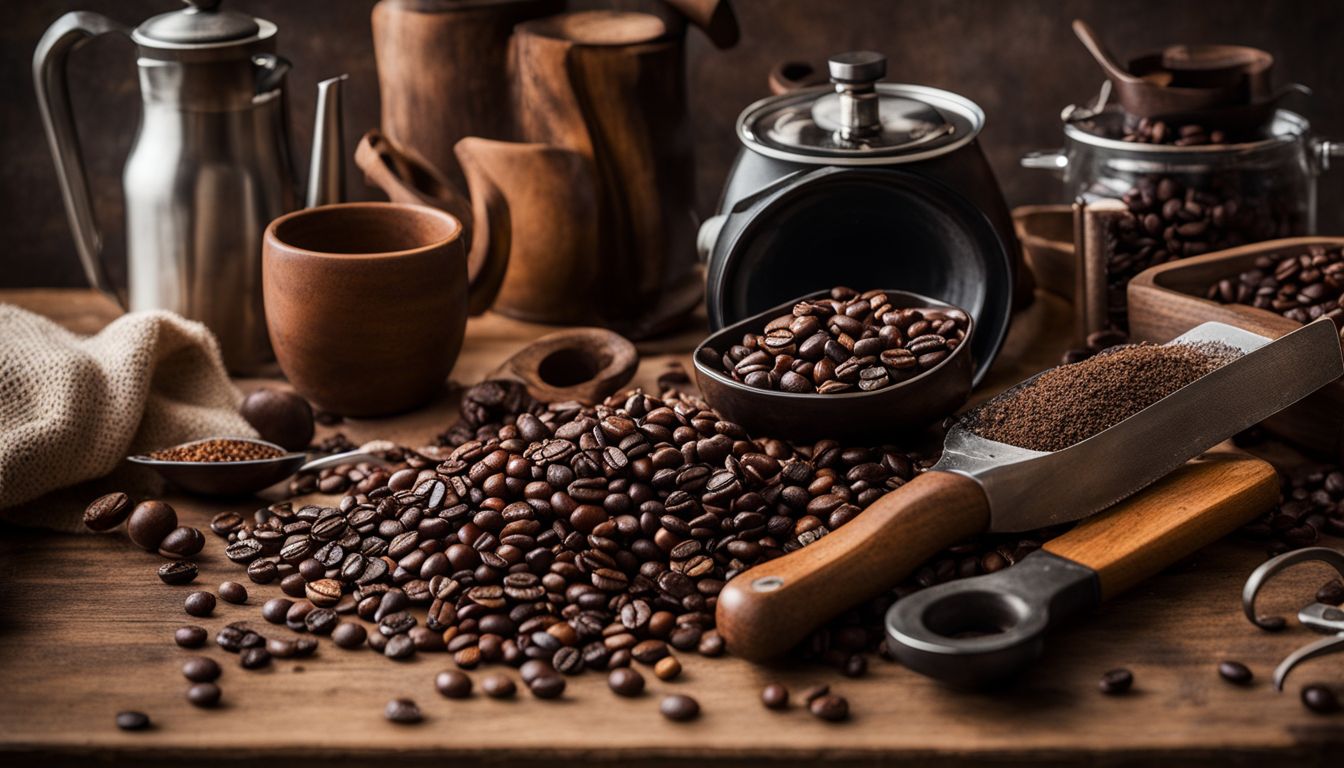
In the grand finale of our coffee blending opera, remember, creating your coffee concoction at home is like being the mad scientist of your kitchen, but with fewer explosions (hopefully). It’s so easy, even your morning-brain self can do it – no Ph.D. in coffeeology required.
Mix and match those beans like you’re Cupid pairing soulmates. Use the right tools, because, let’s face it, a blender isn’t just for smoothies – it’s the magic wand for your coffee alchemy.
Now, here’s the best part – share your special brew with friends, and you’ll become the caffeine wizard they never knew they needed. Or, keep it all to yourself and revel in the glory of being your own coffee superhero every morning. Because who needs capes when you have a killer cup of homemade coffee?
So, fellow bean tamers and flavor magicians, let the blending begin! May your coffee be strong, your mornings be joyful, and your taste buds dance the tango of caffeinated happiness. Let the brewing bonanza commence!
FAQs
1. What’s the difference between Arabica and Robusta coffee beans for home roasting?
Arabica beans, known as Coffea arabica, often have a sweeter, more complex flavor. Robusta beans – or Coffea robusta – pack a strong punch with higher caffeine content and bold taste.
2. Can you make decaf coffee at home?
Yes! Decaf your own coffee is tricky but possible. It involves soaking green beans in water to remove caffeine – just be prepared; it takes time and patience!
3. Is white coffee the same as regular light roast?
Not exactly—white coffee is roasted at lower temperatures than even light roast, making it harder in texture with a nutty taste, while still being part of third wave coffee experiences.
4. How can I create my signature DIY coffee blends?
Start by picking flavors you love from different roasts and origins–mix them up! Test until you’ve got that perfect balance that screams “you”. Write down your recipe to keep it consistent.
5. Do I need special equipment to make my own DIY coffee blend roasts?
You’ll want a reliable grinder—and maybe even a small-scale roaster—but hey, creativity goes far! A simple oven or pan can work when starting out on your DIY blending journey.
